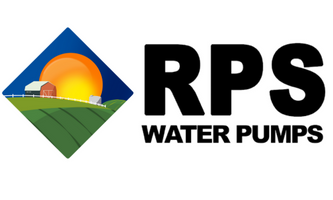

Answering Your Water Pump Questions
with RPS Engineer Mike

Will a bigger well pump increase water pressure?
Liquid pressure is a measure of how many pounds of force a fluid exerts against a tool like a pressure gauge. It can be a little confusing understanding the difference between a measurement like PSI (Pounds per Square Inch) or GPM (Gallons per Minute), but the important thing to understand is that one rate measures velocity and one rate measures force. You can have high velocity and low force, and vice-versa.
This may not feel related to the topic at hand, but the reason I bring up the difference between these two values is that increasing your well pump size (through increasing your HP) does not necessarily increase water pressure. Increasing HP has the potential to increase GPM, PSI or both, but this is not a one size fits all situation

In the pump world the two most important values we look at when determining an appropriate size for someone are their desired GPM and the amount of total PSI they need the pump to produce. For example, our 1HP pump page offers products that can range from 3-62 GPM, and 50-500’ of lift. Lift by the way is just another measure of pressure. For water the conversion is that 1 PSI is equivalent to 2.31’ of lift.
So let’s say you have a residential well with a 1HP pump in it. Do you need to size up in order to increase your PSI? Again, not necessarily! You can actually just buy a different type of pump that is built for higher PSI and a lower GPM. Now on the other hand if you want to keep your GPM the same or raise it up as well, you will need to size your pump a little higher. Keep in mind that if you’re not careful, you may end up with a bigger pump that pushes out a higher GPM, but then outputs the same or even worse pressure! It’s important to either work with a specialist who has access to the relevant pump curves for the products you’re interested in, or better yet ask for the pump curves yourself so that you and your specialist are on the same page about expected values.

One final thing to mention is that low pressure may not always be a result of your submersible well pump. You may want to double check your Pressure Switch, to make sure that it’s set to the range you desire. If you love intense showers but your switch is set at 20/40, you’re going to need to adjust your ‘cut in-cut out’ pressure. As long as your water pump can handle the extra PSI requirements (and for that you’ll need your pump curve), that shouldn’t be an issue. A standard pressure switch (like this one) will have a cut in adjustment nut that by rotating clockwise will increase the PSI held in your pressure tank. Check out this blog post about how to adjust a pressure switch for more information.
At RPS we love giving customers as much information as they can handle. If you’re not satisfied with your current well pump, or have more questions about increasing your pressure, give us a holler at (855)-560-5670 or help@ruralpowersystems.com. We can chat through your current GPM and PSI, and see if you need a different sized pump or something else entirely! If you’re specifically looking for high pressure pumps, we can handle over 1,000’ of lift or about 450 PSI! That’s one pretty intense shower.
Take the Next Step to Water Independence
Learn More About Water Pumps
-
 If you’re considering replacing a well pump and it’s your first time, you may have questions about long it may take. We often say a full install only has to be a couple of hours, but is that actually accurate?Read now
If you’re considering replacing a well pump and it’s your first time, you may have questions about long it may take. We often say a full install only has to be a couple of hours, but is that actually accurate?Read now -

How many GPM is a good well pump?
Water needs can differ significantly depending on circumstances, and you may need a submersible well pump with a significantly higher or lower flow rate, depending on household size, irrigation needs, and sprinkler use.Read now -

Can you put in too big of a pressure tank?
When it comes to sizing a well pressure tank, there really isn’t an upper limit as to how big of a tank you can put in. There are some pros and cons to different size pressure tanks, and they can have an impact on the lifespan of your pump.Read now





